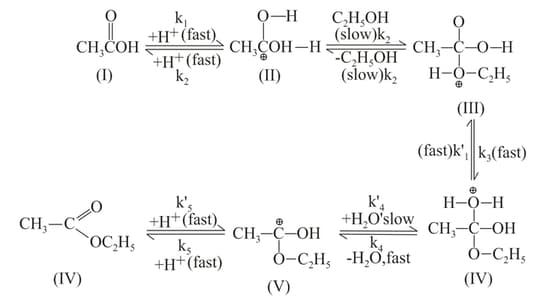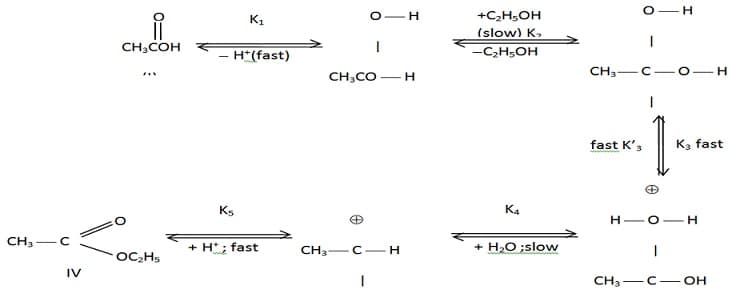Molecularity of a Reaction
Molecularity of a Reaction: Overview
This Topic covers sub-topics such as Mechanism of a Reaction, Molecularity of a Reaction, Rate Determining Step, Elementary Reactions, Unimolecular Reaction, Complex Reactions and, Bimolecular Reaction
Important Questions on Molecularity of a Reaction
The above reaction is an example of
What is the molecularity of the above reaction?
Trimolecular reactions are uncommon because:
If two reactants take part in a reaction, then:
Which of the reactions shows this kind of example ?
If in a unimolecular reaction, takes place according to the mechanism
I.
II.
where are the rate constants and P, and stand for product molecule, normal molecules of reactants and activated molecules of reactants respectively.
Which of the following statements are correct?
For next two question please follow the same
If in a unimolecular reaction, products takes place according to the mechanism
I.
II.
where are the rate constants and P, and stand for product molecule, normal molecules of reactants and activated molecules of reactants respectively.
Which of the following expressions are correct?
The reaction between and occurs in the following steps:
The reaction intermediate in the reaction is
Molecularity of an elementary reaction
Identify the correct potential energy vs reaction co-ordinate graph, which is consistent with given mechanism.
The mechanism of esterification in presence of acid catalyst (H2SO4) is proposed as follows:

Two different reactants involving in a reaction can not be :
Collision theory is true for
In the steady state approximation, if is the intermediate formed, then
The mechanism of esterification in presence of acid catalyst is proposed as follows:

Which of the following potential energy vs reaction co-ordinate diagram is consistent with given mechanism?
STATEMENT-1:
The rate of the above reaction is independent of the concentration of CO
STATEMENT-2: The rate does not depend upon [CO] because it is involved in fast step.
A hypothetical reaction follows the mechanism as given below:
What will be the order of the overall reaction?
A reaction involving two different reactants:
The reaction: has been assigned to follow given mechanism:
I.
II.
III.
The rate constant of step II is while equilibrium constant of step I is . What is the rate of reaction when concentration of and each is mole
The mechanism of the following reaction is:
Step 1
Step 2
Which of the following statements is true-
As per the following consecutive reactions the r.d.s. is
(P)
(Q)
(R)
(S)
